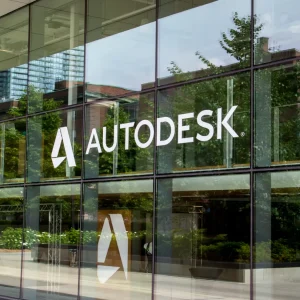
Google Cloud wheeled out two new features this morning: an open source sandbox with secure isolation for containers and the ability to intercept application system calls, and the beta release of Stackdriver Kubernetes Monitoring; an out-of-the-box monitoring solution for Kubernetes, the company said in a blog this morning. It also announced expanded collaboration with open-source Kubernetes monitoring solution, Prometheus.
Kubernetes is the increasingly dominant player in cloud container orchestration, used by everyone from the Home Office to Bloomberg; Monzo to Walmart.
Google joins a flurry of major industry players boosting their Kubernetes offerings.
Cisco yesterday announced Kubernetes support for AppDynamics and Cisco CloudCenter. The same day, CoreOS, the Linux distribution and container management startup announced its Operator Framework, an open source toolkit for managing Kubernetes clusters.
Amazon Web Services this week meanwhile announced that its Fargate container service will support Virtual Kubelet; an open source project that makes it easier to run serverless containers such as ACI using Kubernetes.
Visibility is King
The open-source orchestration platform originally developed then open sourced by Google, makes it easier to build and deploy container-based applications. It is, essentially, a way of efficiently running online software across a vast array of machines, stitching them together into “a big computer” and letting users oversee machines running on competing cloud services as well as inside private data centers.
The ability of developers to inspect them – and underlying infrastructure – to understand complex system interactions and debug failures, bottlenecks and other abnormal behaviour has required manually stitching together multiple tools and data coming from many sources, resulting in siloed views of system behaviour, Google said.
Google Cloud product manager JD Velásquez said: “As a developer this increased observability lets you inspect Kubernetes objects (e.g., clusters, services, workloads, pods, containers) within your application, helping you understand the normal behavior of your application, as well as analyze failures and optimize perfortophomance. This helps you focus more on building your app and less on instrumenting and managing Kubernetes infrastructure.”
He added: “As a Site Reliability Engineer (SRE), you can easily manage multiple Kubernetes clusters in a single place, regardless of whether they’re running on public or private clouds. Right from the start, you get an overall view of the health of each cluster and can drill down and up the various objects to obtain further details on their state, including viewing key metrics and logs. This helps you proactively monitor your environment to prevent problems and outages, and more effectively troubleshoot issues.”
Barking up the Same Tree?
Others have similar ideas.
Announcing Kubernetes support for AppDynamics and Cisco CloudCenter yesterday, Matt Chotin, senior director of developer initiatives at Cisco’s AppDynamics, said: “AppDynamics is the only company that provides full visibility into customer touchpoints, distributed applications, Kubernetes environments and infrastructure.”
He added: “There are myriad monitoring solutions that provide some amount of information. But to get true insight with these tools, you would need to somehow cobble them all together, at which point you’ve become an open-source tools integrator, and you still don’t have complete visibility at the business transaction level.”
Virtual Kubelet developer Brendan Burns said: “The Virtual Kubelet project at its core is an effort to bridge the gaps between serverless containers and the Kubernetes API.”
It works by implementing a virtual node in a Kubernetes cluster, Burns says: “This virtual node represents the serverless container infrastructure making the scheduler aware of the fact that it can schedule containers onto the serverless container APIs.”
See also: Kubernetes vs Docker Swarm: A comparison of cloud container tools








